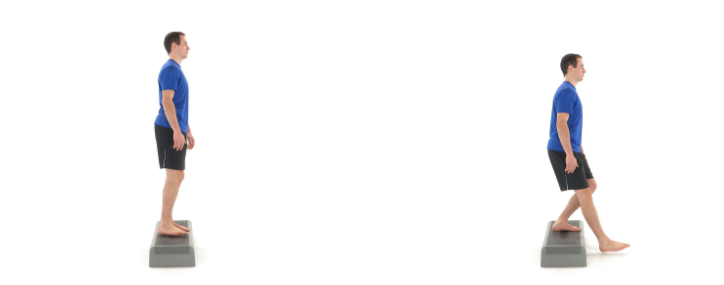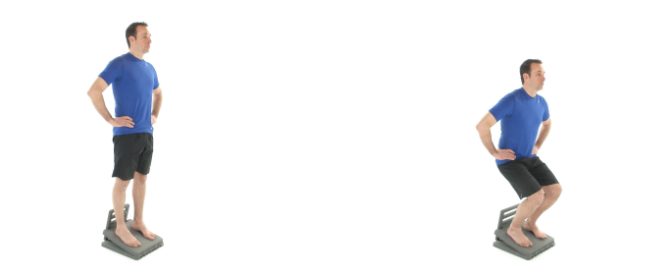Train Your Knees for Strength: Debunking Common Myths
Written on
Chapter 1: Understanding the 'Knees Over Toes' Myth
The notion that you should never allow your knees to extend beyond your toes during strength training is one of the most pervasive myths in fitness. This cautionary stance is often perpetuated without substantial evidence, leading to a misunderstanding that can hinder your physical performance and restrict knee health and lower-body mobility. This is especially critical for runners, who frequently face injuries in this region. If your goal is to develop resilient knees and circumvent lower-body issues, it's essential to move past this outdated belief.
Contrary to popular belief, bending your knees over your toes is not harmful. In fact, failing to do so could be more detrimental.
Why 'Knees Over Toes' Training Matters for Runners?
While it's true that excessive stress on the joints can be detrimental, the 'knees over toes' positioning is not inherently dangerous when executed correctly. When starting any new exercise, begin with lighter weights and fewer repetitions. As your body adapts to the movement, you can gradually increase the intensity.
“The idea that knees should never extend over toes is based on misinformation, creating unnecessary fear around a natural movement we perform daily—like sitting down, descending stairs, or kneeling.” — The Prehab Guys
In reality, allowing your knees to move over your toes is a normal function. Imposing limitations during workouts contradicts the natural mechanics of the body. This added stress on knee cartilage and the quadriceps/patellar tendon, along with surrounding muscles, can significantly reduce the risk of injuries associated with running. Consistent practice of this movement will better prepare the knee's anatomical structures to handle the demands of endurance and stability that running entails.
Additionally, this technique enhances ankle mobility. Many people struggle with dorsiflexion (raising the toes), which can impede vital lower-body exercises like squats. By allowing the knee to pass over the toes while keeping the foot grounded, you can improve range of motion, leading to increased strength and mobility in the ankle joint. Whether you are recovering from knee surgery or are in perfect health, embracing the 'knees over toes' approach is beneficial for everyone.
Chapter 2: Effective Exercises for Bulletproof Knees
Here are three straightforward exercises designed to fortify the knee joint and enhance your running performance. If you're new to the gym or have a history of knee issues, consult with a healthcare provider before beginning. Remember, progressive overload is crucial. Start with lighter weights and lower repetitions, then gradually increase the load as you become comfortable.
Keep in mind that there are instances when this training may not be suitable. If you're lifting heavy weights, the added stress could lead to complications. It’s advisable to maintain your current lower-body resistance training routine while incorporating a few body-weight exercises that promote this new positioning. Below are three of my preferred exercises to integrate weekly:
- Anterior Step-Down

Application: 2 x 10–15 reps per side
Cues: Step down while distributing weight through the planted foot. Lightly touch the ground and then rise back up. Aim to keep your balance and even weight distribution. To progress, increase the step height or add dumbbells.
- Decline Squat

Application: 2 x 10–15 reps
Cues: Similar to a standard squat, but let your knees track slightly over your toes as you lower yourself. This might feel awkward initially, but engage your glutes to rise back up. If you don’t have a wedge, use household items like books for a makeshift decline.
- Proprioception Lunge

Application: 2 x 10 reps per side
Cues: Lunge forward, allowing the knee to move slightly over the toes. To increase difficulty, perform the lunge on an unstable surface like a Bosu ball or pillow. This is a more advanced move, so beginners should start with standard lunges.
Knees over toes is merely another natural motion. We should not stigmatize it. — The Prehab Guys
In Conclusion
Let it be clear: allowing your knees to extend over your toes is entirely natural and a movement we should actively train to strengthen. Incorporating knee-specific exercises into your regimen will significantly enhance your ability to prevent chronic injuries that are common among runners. Additionally, this approach will improve your ankle mobility and strength.
It's high time we stopped vilifying this movement and instead embraced it as a tool for performance enhancement. When performed correctly, 'knees over toes' training can revolutionize your running!
This video demonstrates a knee strengthening exercise routine designed to promote healthy knee function.
This video covers the number one exercise to effectively bulletproof your knees for better performance and injury prevention.